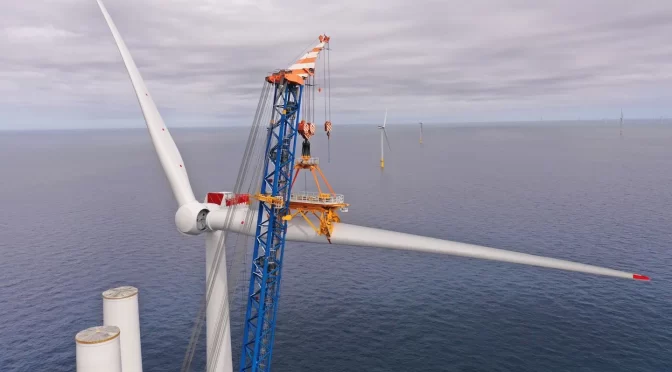A total of 169 gigawatts (GW) of offshore wind farm projects are already under review.
The president of the Brazilian Wind Energy Association (Abeeólica), Elbia Gannoum, assesses that in November Brazil will already have the regulation of Decree 10,946, published in January of this year and which deals with the transfer of physical spaces and the use of resources natural resources and for the generation of electricity at sea, the first step for the installation of wind turbines in offshore wind farms on the Brazilian coast.
She was the moderator of the first panel of the webinar “PD&I: The energy transition and the role of oil and gas companies in the generation of offshore wind energy”, organized by the National Agency for Petroleum, Natural Gas and Biofuels (ANP) on the new technology that begins to reach the country.
“The perspective is that in November the regulations will be ready and we will start 2023 with the regulations now,” Gannoum said during the debate.
The executive pointed out that there are already 169 gigawatts (GW) of offshore wind projects that are being analyzed by Ibama -a volume close to the total installed capacity currently in Brazil, of more than 180 GW-, which demonstrates the interest of investors in the segment. . He highlighted the importance of the discussion that takes place in the ANP, since the association between oil companies and electric power generators will be essential for the development of the offshore electric power generation industry in Brazil.
“We believe that the Decree is the solution, despite also having a Bill pending in Congress, but that it may take time due to the elections. The Decree serves our investors well,” she said.
She pointed out that the environmental regulation is ready and it is enough, after Ibama published a Terms of Reference for the projects that are being analyzed. To get off the ground, however, the industry now needs commercial regulation, “which is underway”, and a look at the need for investment in port infrastructure and reinforcement of transmission lines, to support the large volumes of energy that will be generated.
“We also need cost studies, because offshore wind will have to be competitive with onshore wind and solar, which will determine energy prices for years to come,” she explained.
The executive also highlighted the importance of discussing national content to reduce the cost of equipment and personnel training, predicting that a lot of labor will migrate from the oil and natural gas industry to renewable energies, in the context of the energy transition.
Present at the event, the representative of the National Bank for Economic and Social Development (BNDES), Guilherme Arantes, stressed that oil and gas companies must get involved not only for knowledge, but for the large investments they will have to make.
“We are talking about billions of dollars, everything is superlative (in offshore wind). We talk a lot about green hydrogen and it is offshore wind that will make this connection,” said Arantes.
According to the executive, in the production of electrical energy by onshore wind farms, equipment corresponds to 70% of the cost, while in marine this weight drops to 30%, while infrastructures and services account for 40 % of the total to invest. , and where the oil and gas sector will be able to actively participate.
“We are not studying financing (for offshore wind) yet, but we have to be prepared, both for green hydrogen and for offshore wind and the onshore wind production chain is already involved, we have been meeting with them to talk of new technology,” he reported.
Present at the debate, Gustavo Pontes, from the Energy Research Company (EPE), said that the Ten-Year Energy Plan 2032, prepared by the municipality, will update the energy contribution of future offshore wind farms, as well as the costs. The issue.
He pointed out that offshore wind technology is evolving rapidly around the world and that Brazil, noted as a potential exporter of green hydrogen, will have to significantly increase the generation of electrical energy if it wants to succeed in commercializing the new fuel, since 70% of the cost of green hydrogen comes from electricity. “The global demand for green hydrogen can be a driver of offshore wind energy in Brazil”, he assessed.


